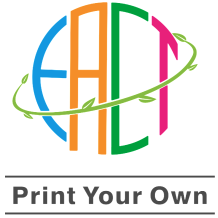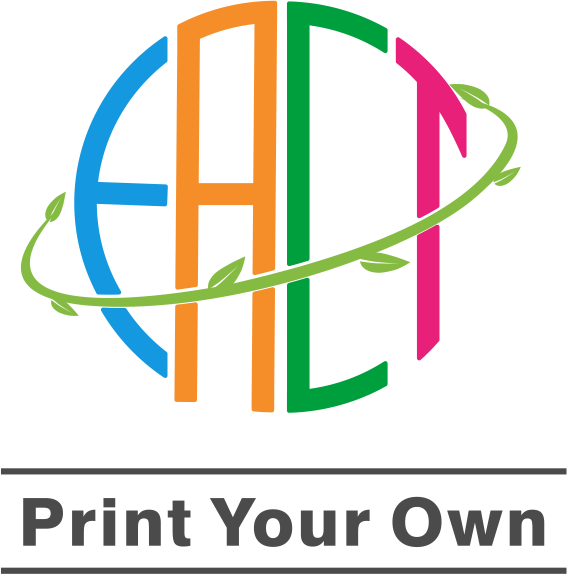Composition: PUL has 2 sides to it, one side is made from a polyester knit which means it has a slight stretch which is great for clothing as you get a bit of “give”, important when you’re moving around as there’s less chance of a seam giving way under stress. One side of the polyester knit has a laminate coating applied so it’s slippery and shiny; this is the waterproof layer. PUL is a soft flexible fabric which doesn’t really crease and it air dries in super quick time and it doesn’t fray when cut. The PULs we stock contain no lead, phlalates or BPAs so are suitable for products intended for children under 12.
Right or wrong side? : I often get asked if there’s a right or wrong side to PUL and as far as the “waterproof-ness” goes there isn’t really, you can have either side as the right side and it will work just the same. That said, for aesthetic and comfort reasons the knit side is often used as the “right” side as it usually has a pretty pattern or colour and as the laminate side is shiny it’s probably more comfortable to have this away from the skin or it’d be a bit sticky. You can line your garment of course which will over come this, and cloth nappies usually have an inner fabric which is closest to the skin, or PUL is often used as a shaped wrap which goes around a fitted nappy which has no waterproof layer of it’s own. In pocket cloth nappies the shiny side is often used as the “right” side simply because it makes stuffing the nappy easier.
Sealing sewing holes: When you sew your needle will leave tiny holes behind in the laminate layer which may affect the waterproof effectiveness of your garment. These holes are easily resealed by either popping your garment in the tumble dryer on low for 20 minutes, or if you are using our own brand
White pul:this particular fabric also has “weldable” properties which means it will weld to itself when high heat is applied. You can do this with an impulse sealer but I have many customers who seal their seams using an iron (use a protective layer of fabric or pressing cloth to ensure you don’t end up with a sticky mess on your iron!)
What is Sandwich PUL? As well as single layer PUL we also stock sandwich pul which works in the same way but instead of being composed of 2 layers of fabric there are 3 layers. The layer of laminate is sandwiched in between 2 layers knit fabric. This is especially helpful if you don’t want to have the shiny laminate side against the skin as it’s hidden away between the knit layers. It’s also stronger so if you are applying a kind of fastener such as KAM snaps extra reinforcement isn’t required around the fastenings.
Uses: Cloth nappies and wraps, anoraks, waterproof trousers, wet bags, swim bags, changing mats, changing bags, mattress protectors, pillow protectors, baby bibs, picnic blankets, incontinence products, anywhere you need a waterproof, breathable layer.
A special note
1.It is double laminated which means it lasts longer and is less likely to delaminate over time, especially helpful for high laundry items
2.It is weldable which means it welds to itself when very high heat (like an iron) is applied (use a pressing cloth). This seals the seams making them completely waterproof
3.It’s fungistatic which (apart from being a brilliant word) means it inhibits the growth of fungi, very helpful when used in a nappy, to line a wet bag or on items such as bibs which may be left wet or damp for some time
Sunny
http://www.customprintingfabric.com/

 USD
USD



